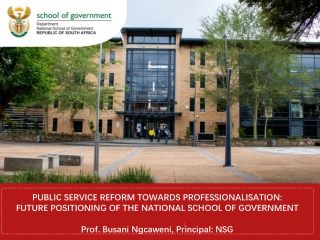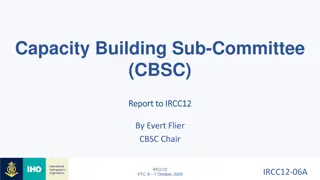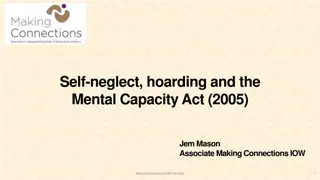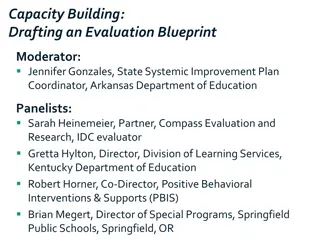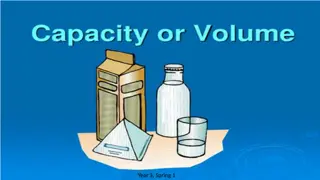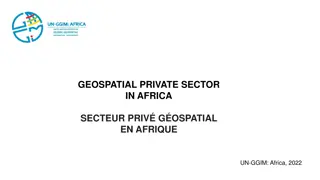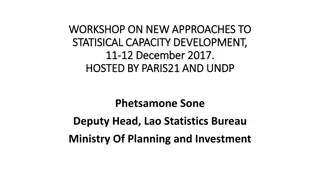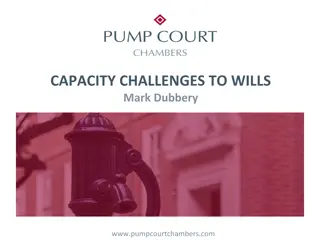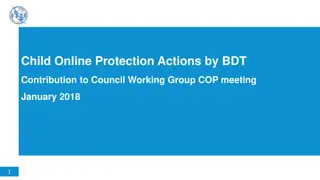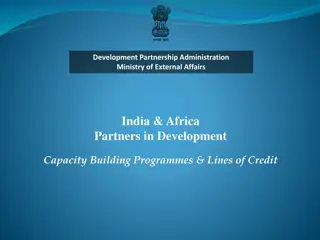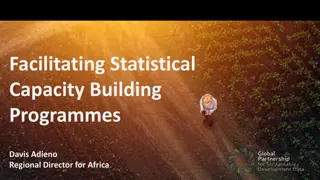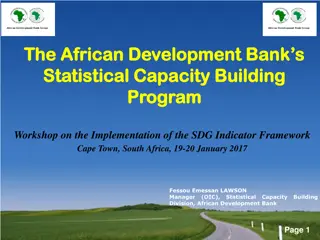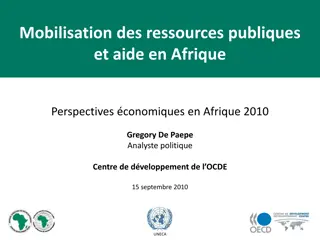Capacity Building in Africa: Insights and Perspectives
Share experience and expertise on Africa's critical capacity needs, focusing on implementing Agenda 2063 and SDGs. Discuss the evolving capacity landscape and the role of institutions like ACBF. Explore African development frameworks and the so-called African narrative. Delve into individual level training needs, performance, and competence development strategies.
Download Presentation

Please find below an Image/Link to download the presentation.
The content on the website is provided AS IS for your information and personal use only. It may not be sold, licensed, or shared on other websites without obtaining consent from the author. Download presentation by click this link. If you encounter any issues during the download, it is possible that the publisher has removed the file from their server.
E N D
Presentation Transcript
THE AFRICA I SEE
SUMMARY OF MY PESENTATION 20 min: Share experience and expertise around Africa s critical capacity needs especially around implementation of Agenda 2063 and Sustainable Development Goals (SDGs). Draw home the role of capacity building/coordinating institutions such as ACBF and how African Governments and various partners can support such institutions. Share my insights around how the capacity landscape is evolving over time building on my experience in the development arena at the continental, regional and country levels. Also feel free to share my experiences generally in the capacity building arena and around Africa s economic and social transformation generally. 10 min:TBC
DEVELOPMENT FRAMEWORKS African Frameworks Lagos Plan of Action (1980) Abuja Treaty (1991) New Partnership for Africa s Development (NEPAD) (2001) Constitutive Act of the African Union (plus various programmes and commitments and 9 Organs) (2002) Agenda 2063 UN Frameworks Millennium Development Goals (MDGs) (2000) World Summit on Sustainable Development (WSSD) and its Johannesburg Plan of Implementation (2002) Rio+20 (2012) Sustainable Development Goals (SDGs) 2015
BLAST FROM THE PAST/ PRESENT? CDSF 2007 (Can t believe I still have this)
WHATS NEW AT Individual Level Traditional Technical skills Training needs assessment=symptoms Training as a response to capacity building Monetary incentives Entrenching loyalty through job security Reward of seniority and compliance rather than performance and creativity (who do you think you are) CDSF Performance and competence Leadership, responsibility and accountability to results/success of organization Analysis of performance hindrance within job arrangements (deliverables, processes, regulations etc.) Performance driven competence development, including attitudes and motivation Peer and team based coaching and mentoring on the job Training as an input into ongoing learning processes Focus on other motivators like personal growth opportunities, conducive management support Job security through performance Accountability to the desired success of organization Reward for performance, leadership, creativity and innovation, dedication and commitment
WHATS NEW At institutional level CONVENTIONAL CDSF Output and result driven process to reform and transformation Reorganisation and simplification of processes Improving performance of existing staff and leadership Functional approach to mandates, roles and responsibilities Primacy of integration of functions over coordination Deep analysis of functions and rationalisation of systems before strengthening Focus on optimising system performance rather than expansion Alternative options for delivery of services Focus on behaviour, competence and performance of staff and leadership Organ development of structure through self-driven analysis and processes rather than restructuring Dealing with the issues of non-performance of existing institutions including leadership Long-term efforts based on critical analysis of capacity requirements with solid M&E Input oriented approach More people More resources Focus on mandates Focus on coordination Focus on structure (notion of institutional reform) Establishment of new institutions to resolve challenges Crisis and politically driven and ad-hoc interventions-no demand Focus on policy development and reform
WHATS NEW at Systemic Level CONVENTIONAL CDSF Focus on policy implementation and impact, and the resulting performance or non- performance Systemic analysis of the deeper problems in terms of institutions, their processes, structures, regulations, resources, peoples competence and motivation, behavior and the context in which institutions operate (policies, environment, institutional arrangements and functions) Systemic analysis of triggers for change which can unleash a high change potential and trigger other changes, based on analytical in-depth knowledge of the system Focus on enabling and motivation factors for organizing the system to perform better, rather than control, including leadership M &E integrated into the design and at all stages of the change process and driven by people who manage the change Communication Focus on policy development and reform Analysis of inputs and outputs in a linear way Real issues dealt under assumptions Simple solutions to complex problems based on superficial analysis System policies and regulations seen as a control measure to improve performance Communication mainly from top down, resulting in information gaps and often resistance to change


